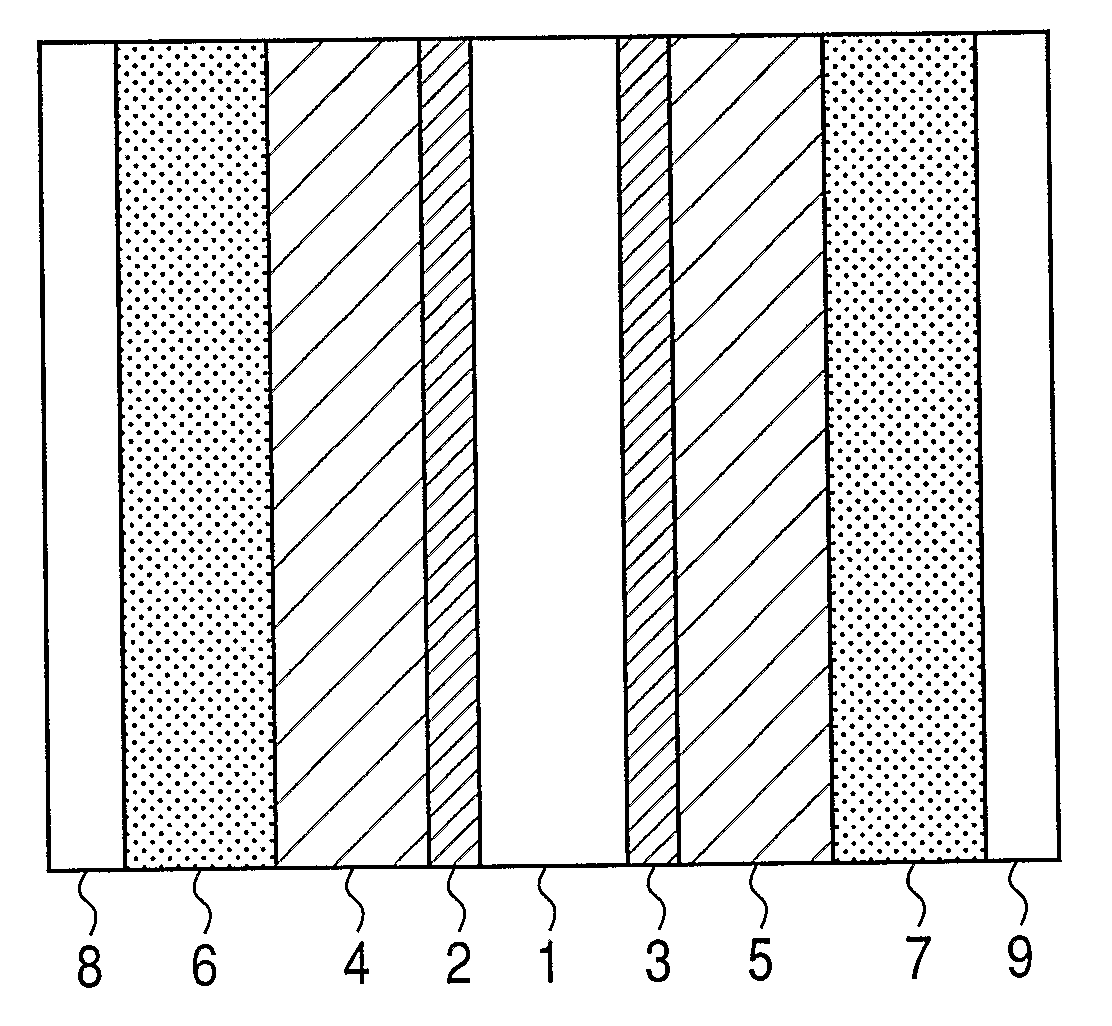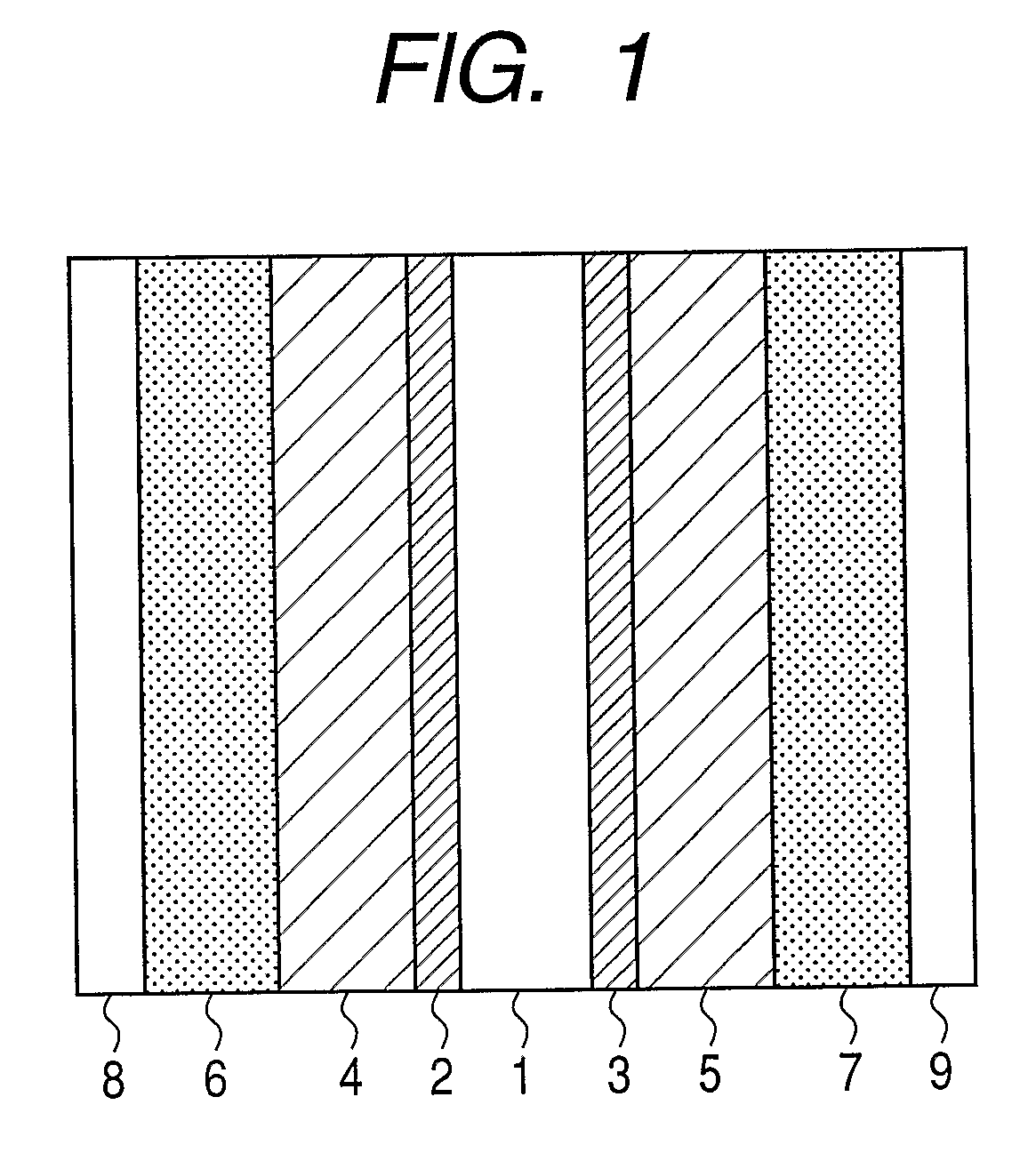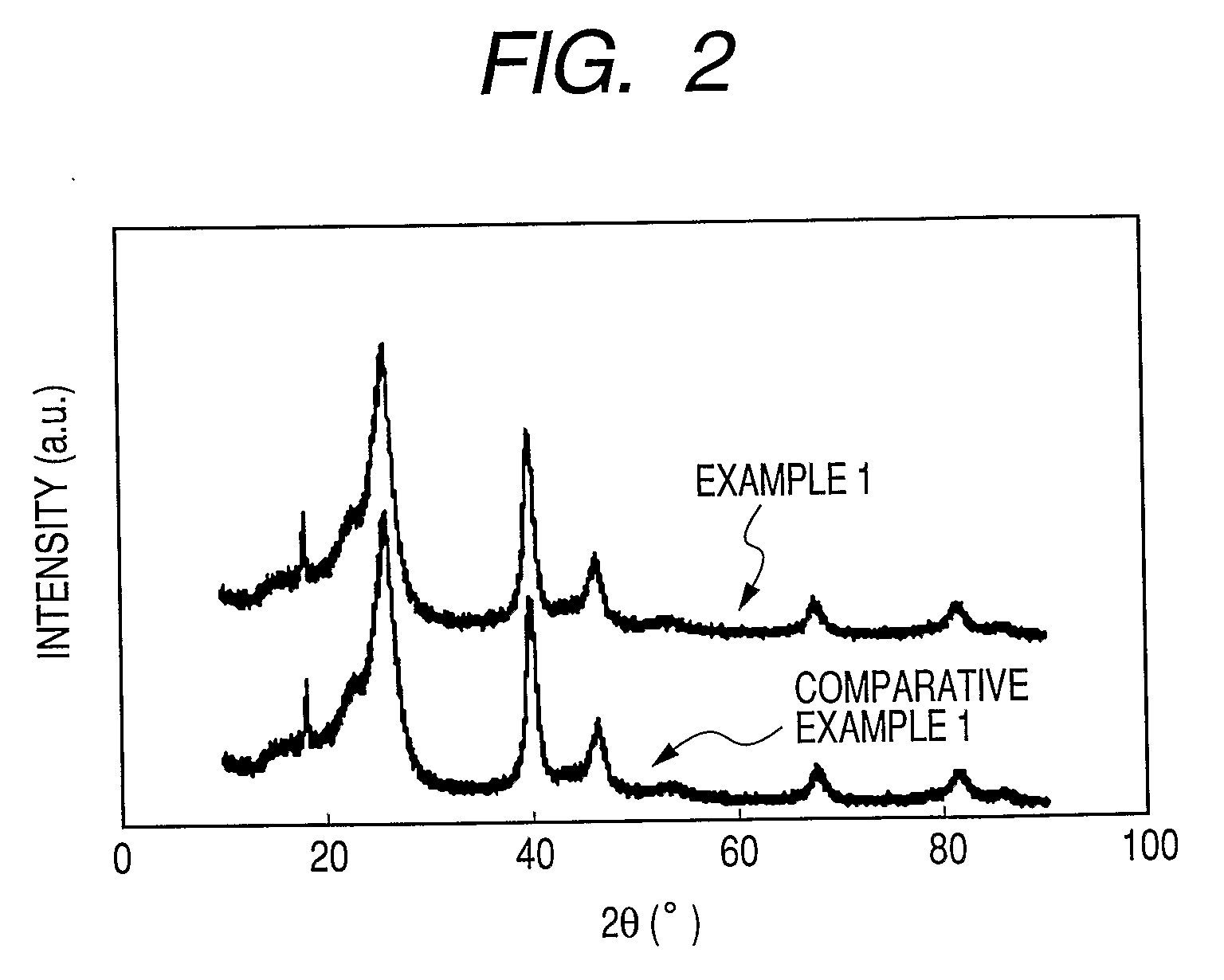Method of producing fuel cell catalyst layer
a fuel cell and catalyst layer technology, applied in the direction of cell components, physical/chemical process catalysts, sustainable manufacturing/processing, etc., can solve the problems of large reduction of surface area, large collapse of dendrite structure, and inability to achieve desired catalytic activity
- Summary
- Abstract
- Description
- Claims
- Application Information
AI Technical Summary
Benefits of technology
Problems solved by technology
Method used
Image
Examples
example 11
, and Example 11;
[0062]FIG. 25 is a graphical representation showing I-V curves indicating the cell characteristics of polymer electrolyte fuel cells manufactured by using the catalyst layers of Example 12 and Comparative Example 3;
[0063]FIG. 26A is an SEM photograph of the catalyst layer of Example 13;
[0064]FIG. 26B is an SEM photograph of the catalyst layer of Comparative Example 6; and
[0065]FIG. 27 is a graphical representation showing I-V curves indicating the cell characteristics of polymer electrolyte fuel cells manufactured by using the catalyst layers of Example 13 and Comparative Example 6.
BEST MODE FOR CARRYING OUT THE INVENTION
[0066]The present invention is described in detail hereinafter.
[0067]A method of producing a fuel cell catalyst layer according to a first embodiment of the present invention includes the steps of: forming a dendritic structural member including a catalyst precursor by a vapor phase method; providing a coating layer on a surface of the dendritic str...
example 1
[0130]In this example, a coating layer was formed on a dendritic structural member formed of platinum oxide and electrochemical reduction by protons and electrons was carried out to form a catalyst layer.
(Step 1)
[0131]First, a catalyst layer for a cathode (hereinafter, simply referred to as “cathode catalyst layer”) was formed. A gas diffusion layer (LT-1200 W (trade name); manufactured by E-TEK Co., Ltd.) was used as a base material for forming a dendritic structural member composed of platinum oxide, and a dendritic structural member composed of platinum oxide as a catalyst precursor was formed in a thickness of 2 μm by a reactive sputtering method. The amount of carried Pt at this time was 0.68 mg / cm2. The amount of carried Pt was measured by XRF (X-ray Fluorescence Analysis). The reactive sputtering was performed at a total pressure of 4 Pa, an oxygen flow rate percentage (QO2 / (QAr+QO2)×100) of 70%, a substrate temperature of 25° C., and an input power of 4.9 W / cm2. In accordanc...
example 2
Example 2-1
[0147]This example is a second example of the embodiment in which the dendritic structural member is reduced electrochemically using protons and electrons described in Example 1. Stated more specifically, by allowing a current to flow in a cell while applying a current sweep, the surface of the dendritic structural member composed of the catalyst precursor having the coating layer provided thereon is reduced, and then the reduction is continued in a state wherein oxygen is diffused into the inside of the catalyst precursor, thereby obtaining a catalyst layer.
[0148]Since Steps 1 to 4 are identical to those of Example 1, only Step 5 is described.
(Step 5)
[0149]In a state where hydrogen was charged in the anode side of the single cell unit obtained by Steps 1 to 4 above in a dead-ended mode and the cathode side was made open to the atmosphere through the metal foam, a current was allowed to flow therein by applying a current sweep at a sweep rate of 0.1 mA / s·cm2to carry out ...
PUM
| Property | Measurement | Unit |
|---|---|---|
| Thickness | aaaaa | aaaaa |
| Thickness | aaaaa | aaaaa |
| Electrical conductivity | aaaaa | aaaaa |
Abstract
Description
Claims
Application Information
 Login to View More
Login to View More - R&D
- Intellectual Property
- Life Sciences
- Materials
- Tech Scout
- Unparalleled Data Quality
- Higher Quality Content
- 60% Fewer Hallucinations
Browse by: Latest US Patents, China's latest patents, Technical Efficacy Thesaurus, Application Domain, Technology Topic, Popular Technical Reports.
© 2025 PatSnap. All rights reserved.Legal|Privacy policy|Modern Slavery Act Transparency Statement|Sitemap|About US| Contact US: help@patsnap.com



